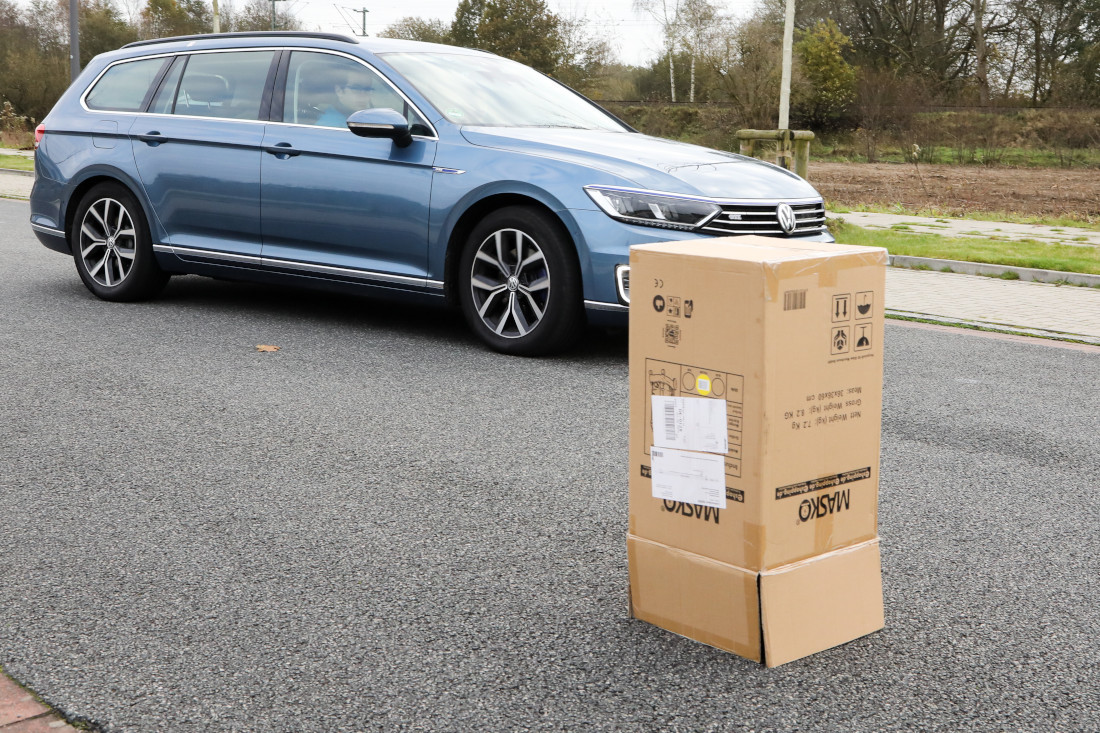Autonomous driving in Bremen-Borgfeld
Creative / Media
Bremen-Borgfeld is a typical and pleasant suburb. Surrounded by farmland, it has residential areas, schools, shops and restaurants. The ideal place to live, away from the hustle and bustle of the city – or to put a self-driving car to the test.
Compared to driving on a motorway, navigating around a residential street in Borgfeld is a challenge. "Rural roads often lack clear boundaries. Sometimes there's a pavement, sometimes there are trees and bushes, sometimes there are parked cars, cycle lanes or gravel. It's very difficult for a computer to recognise all this and tell the difference," says Dr Mitja Echim.
The research fellow at Bremen University's Center for Industrial Mathematics (ZeTeM) is an expert on self-driving cars. Over the past two years, for example, he has been involved in the AO Car project, in which a self-driving VW was sent on hundreds of test drives. This experimental vehicle is also key to the follow-up project, 'OPA3L – Optimally Assisted, Highly Automated, Autonomous and Cooperative Vehicle Navigation and Localisation'. It was launched in early 2019 and will run for four years, with a total budget of €5.3 million.
Closing the mobility gap
OPA3L conducts research into cooperative, networked and autonomous driving in rural suburbs, which is still uncharted territory even for the large car manufacturers. "The drive assistance systems developed by Tesla, Mercedes and Google are already very good at navigating along motorways, but it's a very different story on rural roads. We believe there's still a lot of research to be done in this area," says Echim.
The researchers are anticipating high demand for self-driving vehicles in rural areas. Ride-hail services, for example, could shuttle people from their front doors to local public transport and back again. "We believe that the advent of self-driving cars will see car ownership fall to a lower level than today. Anything else would make little sense, as it would hardly relieve transport issues and reduce traffic jams. The future belongs to ride-hail services – just like a taxi, but without the driver," he adds.
This is what the researchers call 'vehicle on demand', a service that will open up a whole new dimension of mobility for commuters, the elderly and people with disabilities.
Heaven and earth, close together
The project team, which has more than 29 members, is taking a different route than the research departments at the large car manufacturers. The algorithms they are using to control the car in Bremen were originally developed for space exploration. "Robots and space probes have been able to autonomously navigate in space for some time now. We have taken the technology behind autonomous space vehicles and applied it to road traffic," says Echim, who manages the OPA3L project.
The goal of the research is to create uniform software environments and artificial intelligence that can be further developed for a wide range of applications. This is in contrast to the car manufacturers' research departments, which are developing algorithms for their own purposes only.
More on this in our privacy policy.
Interdisciplinary working is the order of the day
OPA3L is also benefiting from other projects, including TOPA3S, a research platform in Bremen exploring autonomous mobility across various modes of transport, including aircraft, ships and cars.
"As a leading hub for the maritime economy and the space industry, Bremen is the ideal place for interdisciplinary working," says Echim. The working group for optimisation and optimal control led by Professor Christof Büskens plays a key role in running the OPA3L project at the Center for Industrial Mathematics.
Also involved are Bremen University's working groups for cognitive neuroinformatics and for computer graphics and virtual reality, the Armed Forces University in Munich, Chemnitz-based IAV GmbH, which is contributing three further vehicles to the project, and Munich-based Advanced Navigation Solutions – ANavS GmbH. The latter brings its expertise in the field of satellite navigation to the table. "Autonomous driving is changing the demands made of satellite navigation – it is becoming indispensable," Echim adds.
Hands on the wheel
Practical field tests with the vehicle will be starting soon, but people on the roads of Borgfeld need not worry that they might encounter a driverless car. There still has to be a person behind the wheel who can intervene in an emergency.
Success Stories
Our 10 Most Favourite Places Last Year
Bremen has a lot to offer, whether it's sunny or rainy. Of course, you have to capture this in the form of stunning photos. Here are our very personal highlights from the past year.
Learn moreBremen as a Street Art City: when a City becomes the Canvas
From gigantic murals to graffiti hidden in the alleyways: Bremen's street art scene is a vibrant expression of creativity and diversity. With the Street Art Cities app, anyone can now discover this world on their own - and experience the Hanseatic city from a new perspective.
Learn moreA Space for Innovations and Ideas in Bremen City
Six years ago, Arne Stehnken was still a new founder himself; today he is part of the management team at the software company syniotec in Bremen's city centre. To make the start easier for other founders, start-ups and creative people and to offer them a place to work, network and exchange ideas, he and his company have opened a creative and innovation centre - a source of inspiration for fresh ideas in the heart of Bremen´s city centre.
Learn more
